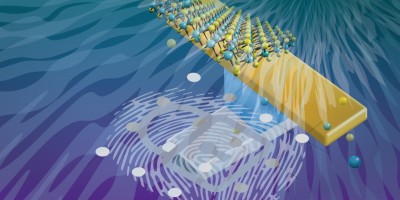Peptides are small yet versatile building blocks of biomaterials. This Comment highlights recent progress in the design of liquid-like microdroplets, or coacervates, based on peptides and produced through liquid–liquid phase separation. This emerging platform holds promise as efficacious delivery vehicles for multi-purpose biomedical applications.

References
Abbas, M., Lipiński, W. P., Wang, J. & Spruijt, E. Peptide-based coacervates as biomimetic protocells. Chem. Soc. Rev. 50, 3690–3705 (2021).
Abbas, M., Lipiński, W. P., Nakashima, K. K., Huck, W. T. S. & Spruijt, E. A short peptide synthon for liquid–liquid phase separation. Nat. Chem. 13, 1046–1054 (2021).
Simon, J. R., Carroll, N. J., Rubinstein, M., Chilkoti, A. & López, G. P. Programming molecular self-assembly of intrinsically disordered proteins containing sequences of low complexity. Nat. Chem. 9, 509–515 (2017).
Cakmak, F. P., Choi, S., Meyer, M. O., Bevilacqua, P. C. & Keating, C. D. Prebiotically-relevant low polyion multivalency can improve functionality of membraneless compartments. Nat. Commun. 11, 5949 (2020).
Liu, J., Zhorabek, F., Dai, X., Huang, J. & Chau, Y. Minimalist design of an intrinsically disordered protein-mimicking scaffold for an artificial membraneless organelle. ACS Cent. Sci. 8, 493–500 (2022).
Luginbuhl, K. M. et al. One-week glucose control via zero-order release kinetics from an injectable depot of glucagon-like peptide-1 fused to a thermosensitive biopolymer. Nat. Biomed. Eng. 1, 0078 (2017).
Kelly, G. et al. Intratumoral delivery of brachytherapy and immunotherapy by a thermally triggered polypeptide depot. J. Control. Release 343, 267–276 (2022).
Iwata, T. et al. Liquid droplet formation and facile cytosolic translocation of IgG in the presence of attenuated cationic amphiphilic lytic peptides. Angew. Chem. Int. Ed. 60, 19804–19812 (2021).
Sun, Y. et al. Phase-separating peptides for direct cytosolic delivery and redox-activated release of macromolecular therapeutics. Nat. Chem. 14, 274–283 (2022).
Liu, J. et al. Multifaceted cargo recruitment and release from artificial membraneless organelles. Small 18, 2201721 (2022).
Acknowledgements
E.S. acknowledges financial support from the European Research Council (ERC) through the European Union’s Horizon 2020 research and innovation programme (grant no. 851963). A.M. gratefully acknowledges financial support from the Singapore Ministry of Education (MOE) through an Academic Research (AcRF) Tier 3 grant (grant no. MOE 2019-T3-1-012).
Author information
Authors and Affiliations
Corresponding authors
Ethics declarations
Competing interests
The authors declare no competing interests.
Rights and permissions
About this article
Cite this article
Liu, J., Spruijt, E., Miserez, A. et al. Peptide-based liquid droplets as emerging delivery vehicles. Nat Rev Mater 8, 139–141 (2023). https://doi.org/10.1038/s41578-022-00528-8
Published:
Issue Date:
DOI: https://doi.org/10.1038/s41578-022-00528-8
- Springer Nature Limited
This article is cited by
-
Probing the surface charge of condensates using microelectrophoresis
Nature Communications (2024)
-
Dipeptide coacervates as artificial membraneless organelles for bioorthogonal catalysis
Nature Communications (2024)
-
Tuning the viscoelastic properties of peptide coacervates by single amino acid mutations and salt kosmotropicity
Communications Chemistry (2024)
-
Redox-responsive peptide-based complex coacervates as delivery vehicles with controlled release of proteinous drugs
Communications Chemistry (2023)


